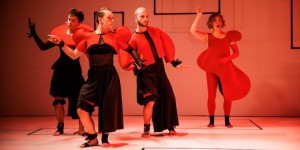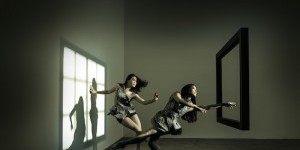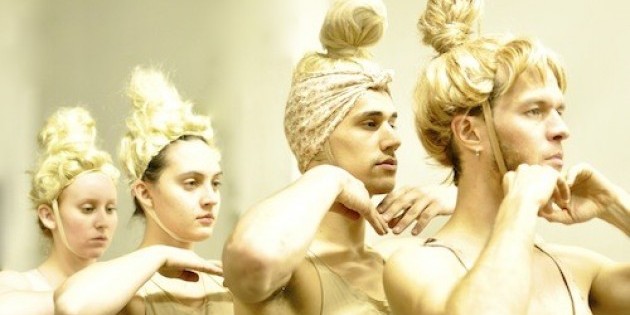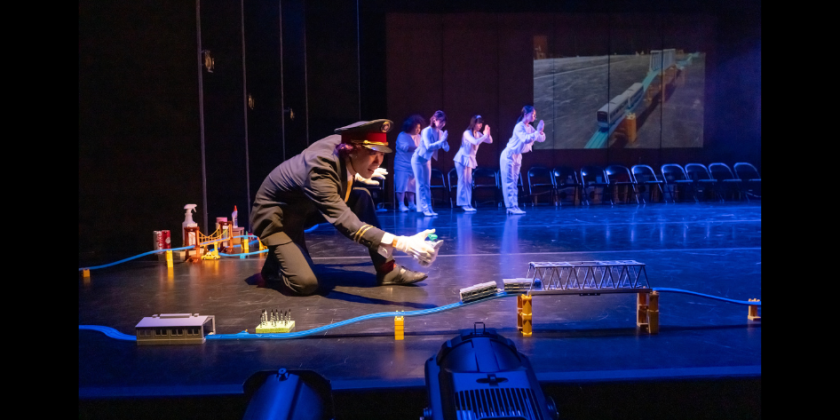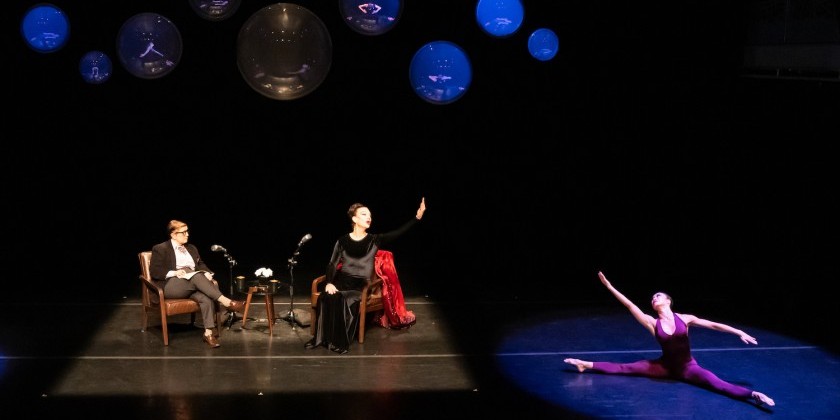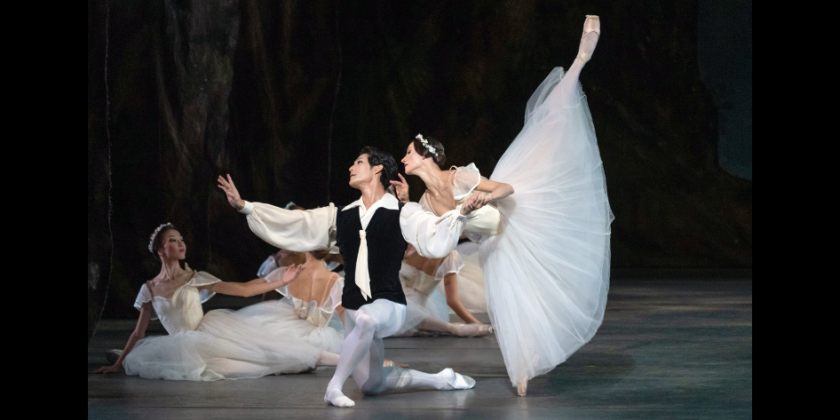IMPRESSIONS: MAXlive Festival 2023: Where Is My Body?
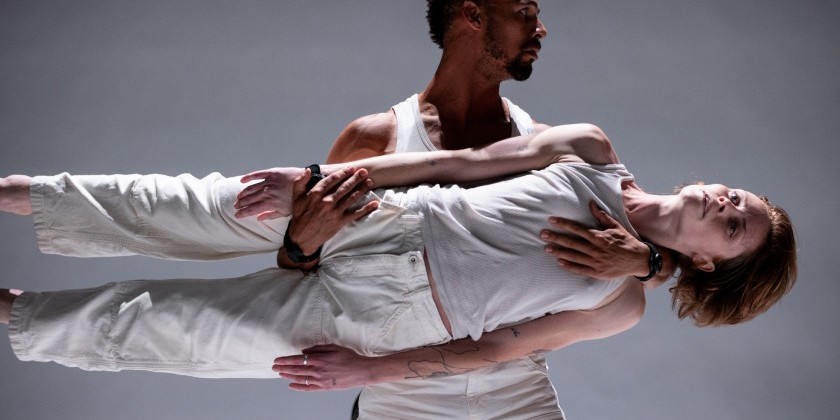
MAXlive Festival 2023: Where Is My Body?
Co-presented with Onx Studio and National Sawdust, Nov. 7-11
Artistic director, Kay Matschullat
Whiteness (excerpt)
Writer and Performer: Paul Pinto
Video and Direction: Kameron Neal
Creative Technologist: Sylvia Ke
Cinematography: Zanni Productions
Assistant Cinematographer: Adele Overbey
Makeup and Costume Design: Madison Cagle
Audio Mixing and Mastering: Philip White
My Body Is an Instrument
Choreography and Concept: Mike Tyus and Luca Renzi
Dancers: Gretchen Ackerman, Luca Renzi, Mike Tyus, Layne Paradis Willis
Music Engineer/Creative Technologist: Chris Tse, Rahm, Sensor technology provided by Instruments of Things
Maquette
Creator: Lisa Jamhoury
Choreography and Performance, Hybrid Movement Company: Françoise Voranger, Grasshopper Mitch, Andrea Nikki Ortiz, Graham Reese
3D Modeling: Woraya Boonyapanachoti, Rongyu Li, Guðjón Örn Lárusson, NYCAP3D
Audio Effects: Nicholas de la Motte
Dramaturg: Emily Reilly
Storyboard Illustration: Jessica Hearn
Unreal Engine Development: Sneha Belkhale, Kevin Peter He, Matt Romein
Producer: Mary John Frank
Unreal Engine Developer and Technician: Christopher Strawley
Audio Engineer: Matt McCorkle
Bag of Worms
Creator, Performer, Creative Technologist: Matt Romein
Writer, Performer, Sound Designer: Peter Mills Weiss
Writer, Performer: Julia Mounsey
Company Manager: Aaron Profumo
Rehearsal Technician: Izzy Heron
Additional Coding Support: Oren Shoham, Oliver-Rose Truxillo, Sneha Belkhal
As technology increasingly intrudes upon our lives, it’s no wonder artists feel compelled to react. For the modern artist, there’s a special dividend: the latest accessories have a way of making any work of art seem up-to-date. Digital imagery offers a metaphor for progress that’s ready-to-hand. Yet technology and art remain uneasy bedfellows. Unlike a paintbrush, or a chisel (or the primal tool, a dancer’s body), our most advanced instruments are still unable to grasp subjective, human experience. Until they do, these gadgets will be strangers to art.
Our artists keep trying, however, and they have a new ally in Media Art Xploration (MAX), a group which is recruiting “creative technologists” to develop projects that explore the field. Sponsoring a series of MAX festivals, beginning in 2019, this group founded by theater director Kay Matschullat is stepping into the space where the Eyebeam center and Troika Ranch were pioneers a generation ago. The latest festival, MAXlive 2023 featured an assortment of choreographers, composers, and digitally processed performers under the rubric Where Is My Body? Presenting works created in the MAXmachina laboratory — not some stuffy, old loft — they appeared at the Onx Studio in Manhattan, and at the National Sawdust theater in Brooklyn from November 7-11, 2023.
Paul Pinto is the likeable protagonist of Whiteness, the title of a video and a semi-live performance created in tandem with videographer and director Kameron Neal. In this work-in-progress, presented November 7, at the Onx Studio, Pinto admits that he wants to be liked. His disembodied head on-screen has a rakish charm as it tosses from side to side and sings, multiplying to become a chorus. Later, the head tries on different disguises, wearing a Hester Prynne bonnet and a Darth Vader mask, and wrapping itself in the American flag. Pinto isn’t sure how he fits into America’s cultural landscape. White gloves try repeatedly to erase him, and he has an awkward encounter with a traffic cop. He claims that living in a “white space” causes him “to rage,” but confesses that he doesn’t really know what whiteness is.
Maybe Pinto would be more comfortable in the real world. The sock-it-to-me graphics that he and Neal have designed recall Constructivist agitprop; and in Whiteness the creators have fashioned a tricky, ideological space where individuals who push the wrong button may suddenly disappear. When we last see Pinto, he is on the run.
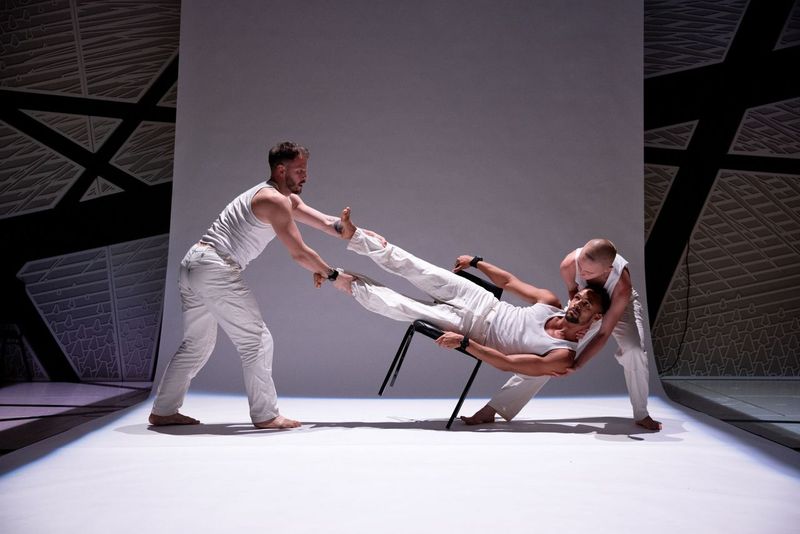
Choreographers Mike Tyus and Luca Renzi hail from Los Angeles, where, under the jacaranda blossoms, a new Dystopia is a-bornin.’ In their piece, My Body Is an Instrument, shown Nov. 8, at National Sawdust, four dancers wear black wristbands containing wireless motion sensors manufactured by the company Instruments of Things. These sensors trigger a prefabricated soundscore, the “musical accompaniment” ranging from industrial clatter to Chopin to a scratchy voice recording. Since this aural backdrop merely provides atmosphere, the technology seems like a stunt. The dancing packs a punch, though, with its violence and creepy lack of emotional affect. Supposedly, the digital devices so ubiquitous in our daily lives offer us pleasure, convenience, and new ways to socialize. My Body Is an Instrument reminds us, however, that the same technology can desensitize us, and leave us prey to social control.
Like the protagonist of George Lucas’ cult film THX 1138, the dancers in My Body Is an Instrument wear bleached white uniforms, while their blank visages suggest their minds have been scrubbed. Gretchen Ackerman and Layne Paradis Willis join the choreographers partnering each other robotically, manipulating limbs, lifting, carrying, and rearranging bodies as if they were so much freight. Proximity is a matter of indifference to them, as no matter how close they come to one another — marching around the perimeter of the space pressed close together, or seated face-to-face on chairs where human beings might have a conversation — they remain emotionally disconnected. While the dancers pause at times, their movement has a slam-bang impulse that becomes monotonous, even though the partnering and group designs display considerable invention. Toward the end, a bar of red light begins to rise and fall on the screen behind the performance space, and black squiggles appear on the white floor. Do these signs suggest an alarming breakdown, or a breakthrough of some kind? Lying on the floor, Renzi and Tyus clutch each other, then just as suddenly fall apart.
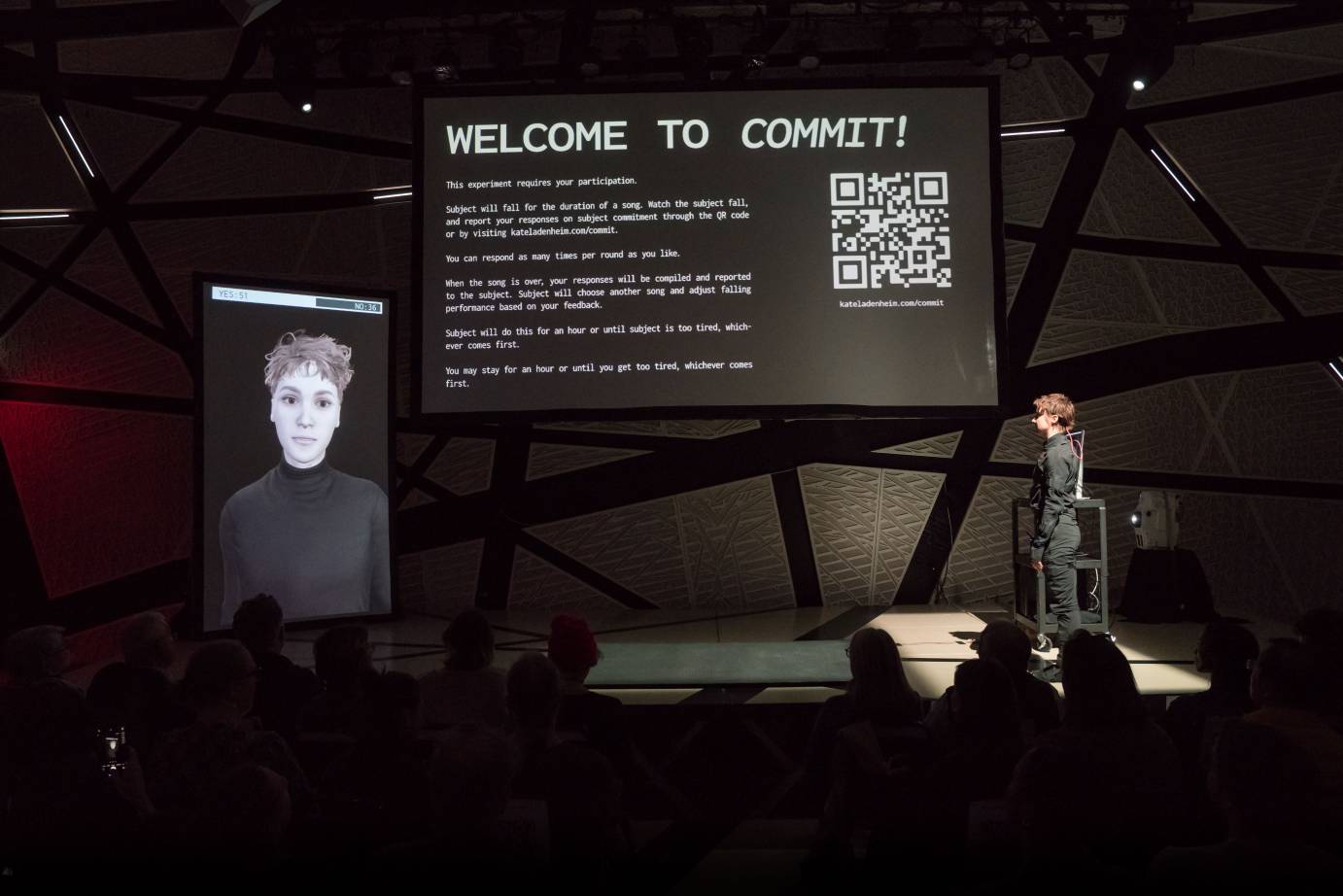
Unfortunately, I missed Kate Ladenheim’s dance solo Commit!, the following night, in which audience members provided feedback to improve the artist’s performance — dance criticism in real time. When Sister Sylvester invited us to toss back a “DNA cocktail” containing genetic material from Berthold Brecht’s Berliner Ensemble (Nov. 10), I took a pass. The program description of Sylvester’s piece, Good Genes, suggests that, almost 150 years after the premiere of Ibsen’s Ghosts, eugenics is more than ever a scientific trend that should concern us. It would be wonderful to see the Berliner Ensemble cloned, of course.
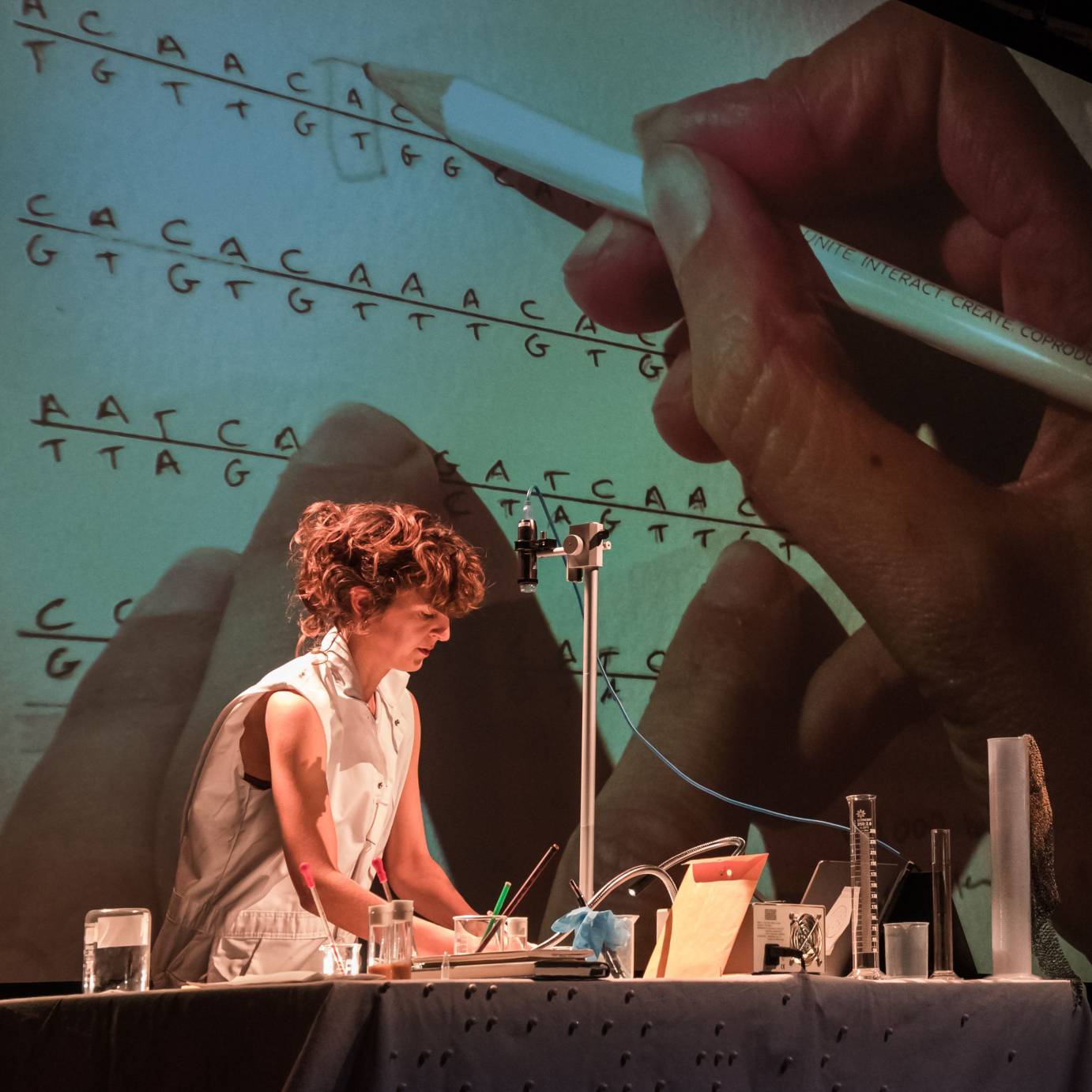
“If we don’t pay attention, we might lose ourselves,” Lisa Jamhoury warns us in a voiceover, during the dance with acrobatic avatars called Maquette, Nov. 11, at the Onx Studio. Jamhoury wants us to reconnect with our imperfect human bodies. She distrusts both the average dimensions of a 1940s medical model named “Norma,” and the idealization of ancient Greek sculpture. Instead of offering an alternative, however, Jamhoury and her associates, who include four dancers from the Hybrid Movement Company, plunge headlong into a world of techno-fantasy, where luminous images projected on the walls divert our attention from the physical reality of the performers.
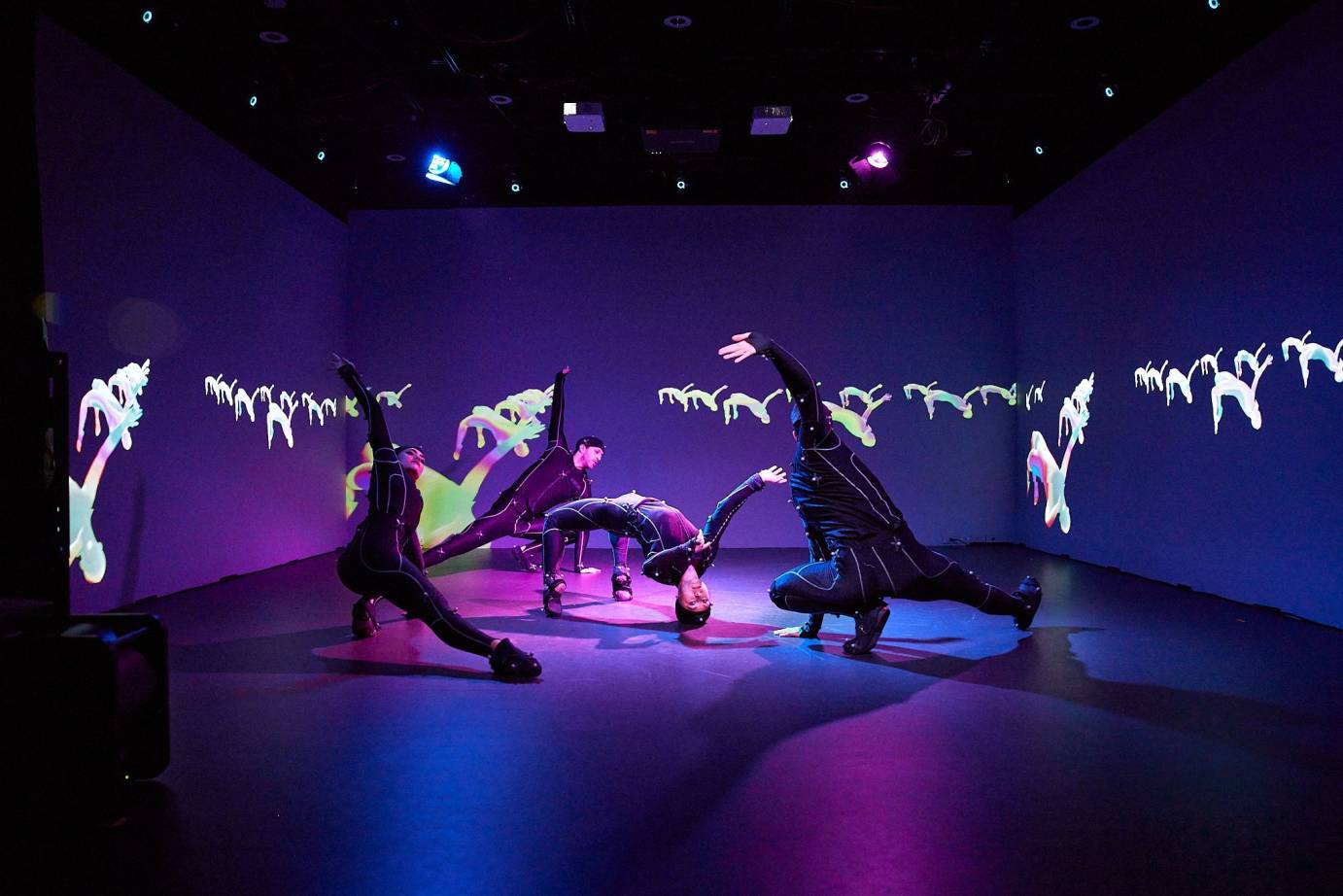
In Maquette, the dancers wear motion-capture suits from OptiTrack, black sportswear studded with knobs in X-base markers. This wondrous technology translates their movements into digital imagery. Unfortunately, it also reduces the dancers to kuroko-like stagehands serving the video avatars who are the show’s real stars. Although the costumes allow freedom of movement, the technology remains confining, because (according to a knowledgeable observer) it cannot process the actions of more than four dancers at a time, and limits their dynamic range. Thus, the dancing proceeds at a calm and steady pace; while the choreography — a mix of Cirque de Soleil-style acrobatics, statue-posing, and break-dancing — risks being ignored.
On-screen, meanwhile, Jamhoury shows us images of monstrous growth and destruction. A “Norma”-like avatar stands like a statue on a platform at one end of a virtual courtyard. As the dancers move, the avatar begins to morph, splitting and metastasizing. It floats off its base, and twists into fantastic shapes with myriad heads and feet. After many permutations, the avatar disintegrates, and the virtual architecture crumbles in a mock disaster. In another scene, an army of rosy-tinted athletes exercise on a virtual parade ground, leveraging themselves against a non-existent surface. Finally, Jamhoury takes us into the air, where a jungle grows on a flying rock, and where naiads sport with a giant bubble at the base of a city of windowless skyscrapers, which somehow rise from the rippling waters of a bay. This is stoner art, and would be more satisfying if we were high.
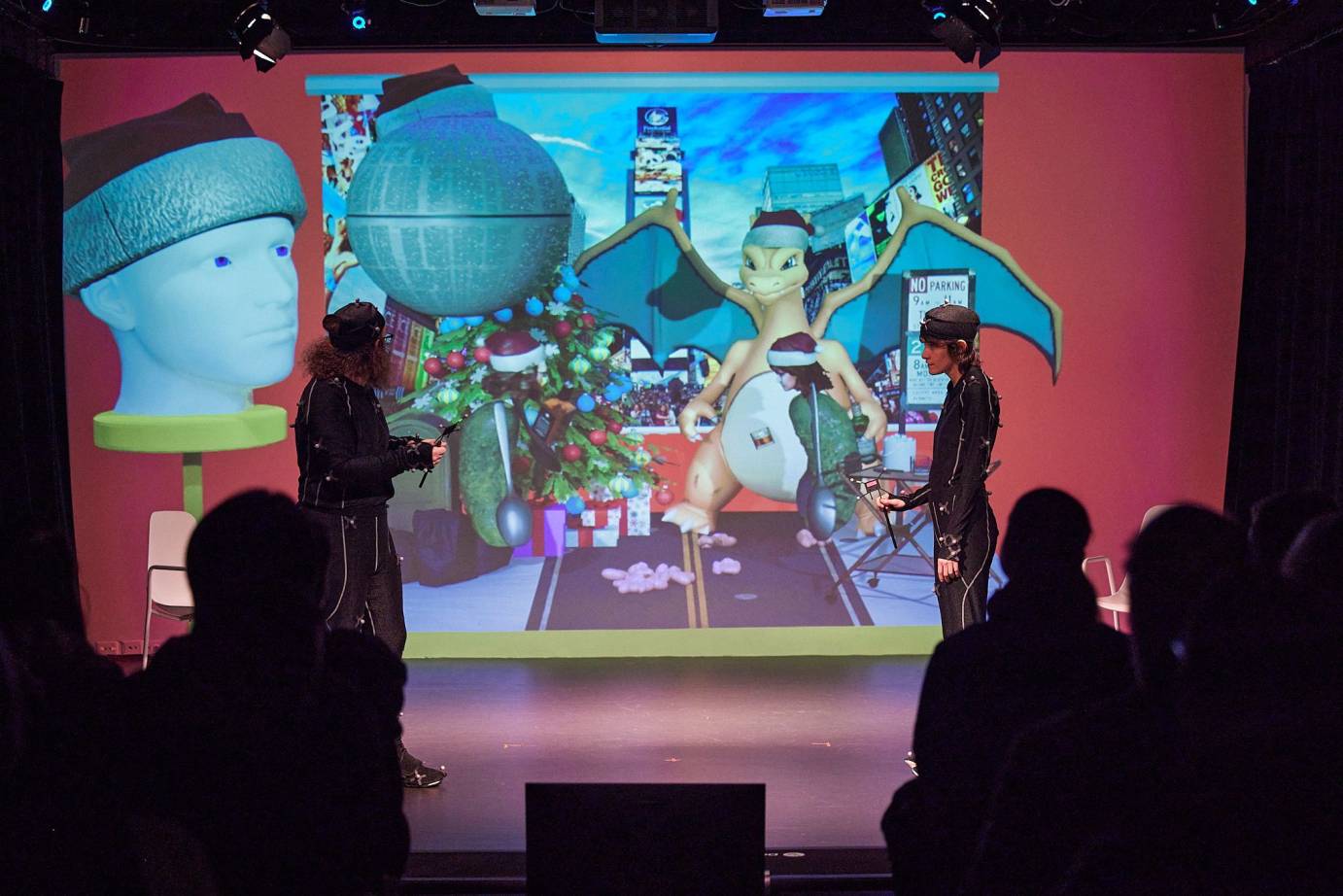
Matt Romein displays a homicidal, but all-too-human touch in Bag of Worms, the interactive performance that follows Maquette on a double-bill. The subject of Bag of Worms is Romein’s anger, and anti-social impulses generally. An obsessive, not to say demented gamer, Romein is annoyed because the designers of the gaming figure known as Toad neglected to give their creation internal organs, or even draw a head beneath his mushroom cap. Romein wants the animated figures in the video games he loves to be real.
Virtual mayhem ensues, as Romein takes out his frustrations on Peter Mills Weiss, a schlemiel in a motion-capture suit, whose on-screen avatar is repeatedly slaughtered in a video game also called Bag of Worms. In this game, Romein has an avatar, too. A psychotic talking head relays his instructions, ordering Weiss’s execution and worse. In a sendup of a TV infomercial, Weiss is disemboweled and required to demonstrate the sales product by vacuuming up his own wriggling entrails. Armed with virtual knives, firearms, and a chain-saw, Julia Mounsey’s avatar helps Romein carry out his sadistic fantasies. She looks on in boredom as blood gushes and spouts from Weiss’ butchered carcass, and his animated guts continue to squirm.
Bag of Worms is just a stupid game, as they say. Yet it leaves us thinking. Perhaps we should focus more on raising our human consciousness through art, and less on inventing flashy new toys.




